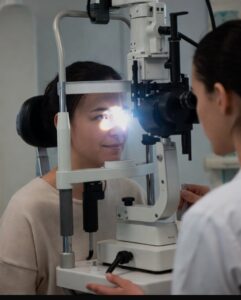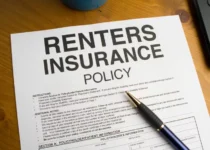How Much Is An Eye Exam Without Insurance?
How Much Is An Eye Exam Without Insurance?
Maintaining good vision is essential for everyday life, but the cost of an eye exam can be a concern for those without insurance coverage.
Eye exams help detect vision changes, eye diseases, and even early signs of health conditions like diabetes or high blood pressure.
Without insurance, the price of an eye exam can vary widely depending on where you go, the type of exam you need, and your location.
On average, you can expect to pay anywhere from $70 to $200 for a standard comprehensive eye exam, though discounts and promotions can make it more affordable.
Note: If you visit a retail vision center inside a store like Walmart or Costco, the exam is usually on the lower end of that range because those clinics focus on basic vision checks for glasses or contact lenses.
However, if you book an appointment with a private optometrist or ophthalmologist, the price tends to rise because they often include more in-depth testing, such as checking your retina, eye pressure, and overall eye health.
So, while you might pay around $100 on average, understanding what’s included — and shopping around — can make a big difference in how much you actually spend.
Different Prices For Eye Exam Without Insurance?

- Many retail optical chains (big-box stores) offer exams around US $70 to US $100.
- Independent optometry offices or practices offering more comprehensive services may charge US $150 to US $200 or more for uninsured patients.
- One source gives a national average of about US $136 for a comprehensive exam without insurance.
- Some discount clinics or promotional offers may have exams for as low as US $45-US $50, though these may be limited in what they include.
Types Of Eye Exam Without Insurance?
Even without insurance, there are several kinds of eye exams available depending on your needs and budget. Each type serves a different purpose and varies in cost and depth of examination.
1. Basic Vision Screening
A basic vision screening is a quick test that checks how well you can see at different distances. It’s often done at schools, community health fairs, or optical stores.
- Purpose: Detects common vision problems such as nearsightedness, farsightedness, or astigmatism.
- Average Cost: Around $40–$70 without insurance.
- Limitations: Does not evaluate overall eye health or check for diseases like glaucoma or cataracts.
2. Comprehensive Eye Exam
A comprehensive eye exam is performed by an optometrist or ophthalmologist and provides a full assessment of your vision and eye health.
- Purpose: Tests visual acuity, eye coordination, and internal eye health using dilation or imaging.
- Average Cost: $100–$200 without insurance.
- Includes: Eye pressure testing, retinal examination, and prescription updates.
- Recommended: Every 1–2 years, especially for adults or anyone with vision problems.
3. Contact Lens Exam
If you wear or want to start wearing contact lenses, you’ll need this specialized exam in addition to a standard eye test.
- Purpose: Measures your eyes for the proper lens fit and evaluates tear film and corneal health.
- Average Cost: $120–$250, depending on whether you’re a new or returning patient.
- Includes: A contact lens fitting and a trial pair in most cases.
4. Eye Health Exam or Medical Eye Exam
This exam focuses on diagnosing or managing eye diseases and medical conditions rather than just vision correction.
- Purpose: Screens for and monitors diseases like glaucoma, macular degeneration, diabetic retinopathy, or dry eye.
- Average Cost: $150–$300, depending on the complexity and tests required.
- Often Done By: An ophthalmologist (a medical eye doctor).
5. Pediatric Eye Exam
Designed specifically for children to ensure their vision develops properly.
- Purpose: Detects lazy eye (amblyopia), crossed eyes (strabismus), and other developmental issues.
- Average Cost: $70–$150 without insurance.
Factors That Affect The Cost Of An Eye Exam Without Insurance
1. Type of Provider
The price of an eye exam can vary depending on where you go. Retail optical chains or big-box stores (like Walmart Vision Center or Costco Optical) often charge less—usually between $70 and $100—because they handle high patient volumes. Independent optometrists or private practices typically charge more, often $150 or higher, since they may offer more personalized care and advanced testing.
2. Type of Exam
Not all eye exams are the same. A basic vision screening that checks how well you see is cheaper, while a comprehensive eye exam—which includes tests for glaucoma, cataracts, and retinal health—costs more. If you need contact lens fittings, retinal imaging, or dilation, expect to pay extra.
3. Location and Cost of Living
Prices for eye exams tend to reflect the local cost of living. Urban areas or regions with higher living expenses (like large cities) usually charge more than small towns or rural areas.
4. New vs. Returning Patient
First-time patients often pay slightly more because the exam includes a full health history and a complete set of baseline measurements. Returning patients may pay less for routine follow-ups.
5. Technology and Equipment Used
Clinics that use advanced diagnostic tools—such as digital retinal imaging or optical coherence tomography (OCT)—may charge more due to the cost of maintaining and operating this equipment.
6. Promotions and Discounts
Some optical centers or community clinics offer seasonal deals, student discounts, or package deals that include both the exam and glasses, which can significantly lower the total cost.
Step-by-Step: How to Get an Eye Exam Without Insurance
Step 1: Determine What Type of Eye Exam You Need
- Vision screening checks how clearly you see (for glasses or contacts).
- Comprehensive eye exam also looks for eye diseases like glaucoma or cataracts.
- Knowing which one you need helps you find the right provider and avoid paying for unnecessary extras.
Step 2: Research Local Eye Care Providers
- Look up optometrists (O.D.) and ophthalmologists (M.D.) in your area.
- Compare prices by calling offices or checking their websites.
- Retail optical chains like America’s Best, Walmart Vision Center, or Costco Optical often post exam prices online.
Step 3: Ask About Self-Pay or Discount Rates
- Many clinics offer discounts for uninsured patients.
- Ask if they have cash-pay specials, first-time visit deals, or bundled offers (exam + glasses).
- Some places even provide sliding-scale fees based on income.
Step 4: Check for Free or Low-Cost Vision Programs
- Search for local nonprofit clinics, community health centers, or optometry schools that offer reduced-cost exams.
Organizations like:
- Lions Club International
- VSP Eyes of Hope
- Prevent Blindness America
Local public health departments often sponsor free or low-cost eye exam days.
Step 5: Visit an Optometry School
- Colleges of optometry offer exams performed by students under professional supervision—typically half the usual cost.
These are great options for comprehensive exams on a budget.
Step 6: Look for Retail Promotions
- Big-box retailers or optical chains often have promotions like:
- “2 pairs of glasses + eye exam for $79.95”
- “Free exam with glasses purchase”
- Check websites or flyers for current deals.
Step 7: Prepare for Your Appointment
- Bring a valid ID and any old glasses or prescriptions.
- Write down your vision concerns or symptoms.
- Bring payment in cash or card, as some discount clinics may not bill insurance.
Step 8: Follow Up and Keep Records
- Ask for a copy of your prescription and exam summary.
- Keep them for future visits or when ordering glasses online.
- Schedule a routine check-up every 1–2 years to maintain eye health.
Question To Ask Before Booking An Eye Exam Without Insurance?
Questions about cost & payment
1. “What is the total cost of the eye exam if I’m paying out‑of‐pocket (no insurance)?”
2. “Do you offer a discounted rate or cash‑pay price for uninsured patients?”
3. “Are there any additional charges beyond the exam (for example, dilation drops, retinal imaging, extra tests)?”
4. “Will I be required to pay at the time of service, or can it be billed later?”
5. “If I need glasses or contacts, will those costs be separate from the exam? Can you estimate them?”
Questions about what the exam covers
6. “What will the exam entail—what tests are included?”
7. “Will you dilate my pupils during the exam? If so, how long will that affect me afterward?”
8. “Is this a basic vision screening or a comprehensive eye exam (checking for eye diseases, etc)?”
9. “How long should I expect the appointment to last?”
10. “Will I receive a copy of my prescription if I need glasses or contacts?”
Questions about provider & quality of care
11. “Are you an optometrist or ophthalmologist (or both)?”
12. “How experienced are you with issues like mine (if I have specific concerns)?”
13. “What happens if you find a serious eye condition—do you provide referrals or follow‑up care?”
14. “What technology do you use for the exam (for example, retinal imaging)?”
15. “What should I bring with me (glasses, contacts, list of medications, medical history)?”
Final checklist before booking
- Confirm the price in writing or ask for a clear quote.
- Ask whether any tests (which might cost extra) are optional and whether you can decline them.
- Make sure you know how to pay (cash, card, instalments) and if there are any hidden fees.
- Ensure you’re comfortable with the provider and their exam process.
Conclusion
Maintaining good eye health is essential, even if you don’t have insurance. While the cost of an eye exam without coverage can vary—typically ranging from $70 to $200—there are many ways to make it affordable, from retail optical chains and community clinics to optometry schools and special promotions.

By asking the right questions, comparing providers, and exploring discounts, you can get a comprehensive, reliable eye exam without breaking the bank.
Prioritizing your vision today can prevent more serious and costly eye problems in the future.


